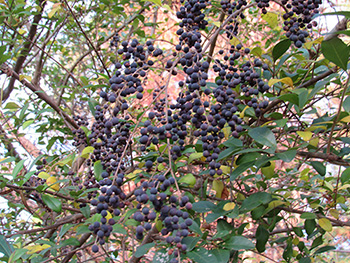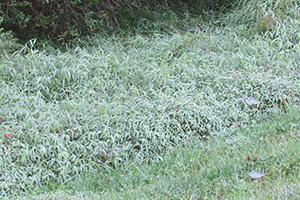Invasive Plant Species in North Carolina
Invasive Plant Species in North Carolina
Campus Terrestrial Space Invaders
By Bill Steinmetz and Bill Willis
December 9, 2016

(Photo courtesy of Bill Willis/NIEHS)
Members of the Site Ecology Team (SET) are participating in invasive plant species identification tours on the EPA side of the Federal campus. Invasive species that are discovered in the forest margins are flagged with orange Invasive Species tape for future removal and herbicide treatment to prevent regrowth. These activities are conducted in accordance with guidance provided by Executive Order 13112, which requires Federal agencies to detect, control, and monitor invasive species. The EPA campus tours were a good opportunity for the SET team to become more familiar with invasive species under field conditions.
Similar surveys have been performed on the NIEHS side of campus with more expected in 2017. Some of the invasive plant species that are commonly found on the shared Federal campus include Bradford pear, Japanese honeysuckle, Lespedeza, Ligustrum (privet), Johnson grass, and Stilt grass. Invasive species can outcompete and displace native vegetation, thereby limiting plant diversity, reducing bee and butterfly populations, and decreasing food sources for wildlife. Currently NIEHS is focusing control efforts on Lespedeza, Johnson grass, and Stilt grass by removing seed heads, mowing, and plowing.

(Photo courtesy of Bill Willis/NIEHS)
Visit these sites for more information about native and invasive plants in North Carolina:



